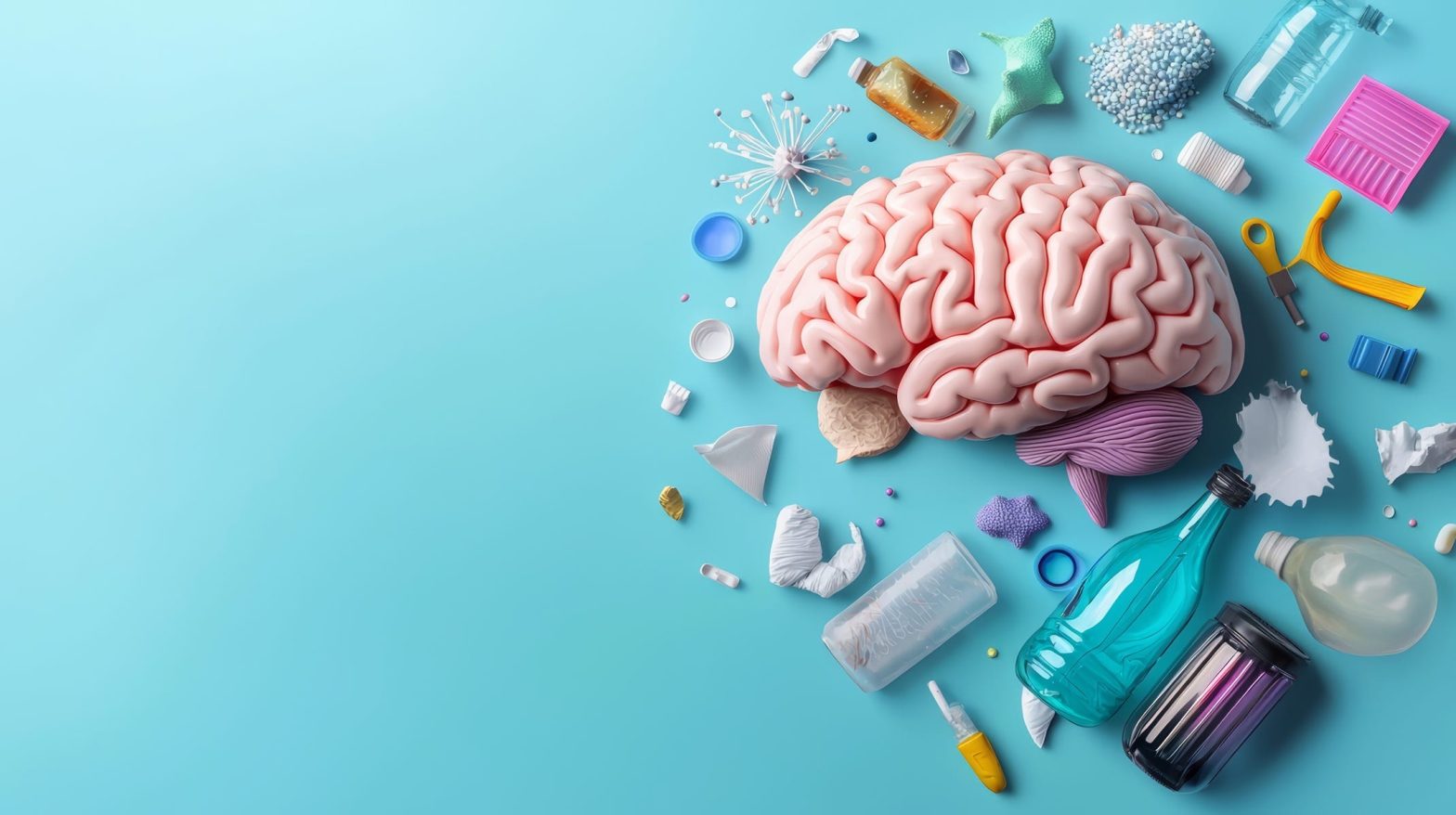We are what we consume. Startling new research reveals an unsettling truth: we are increasingly consuming plastic. Microscopic particles of plastic, known as microplastics and nanoplastics, are infiltrating our bodies, and a recent study has discovered a surprisingly high concentration of these particles in the brain.
This article delves into the groundbreaking findings of a study published in Nature Medicine, which examined the presence of nano- and microplastics in human tissues. The results are alarming, suggesting that our brains may be accumulating significant amounts of plastic over time. We’ll explore the implications of this discovery, potential sources of plastic exposure, and actionable steps you can take to protect your health.
Microplastics Found in Human Tissues
Microplastics and nanoplastics, incredibly tiny plastic fragments, have been detected in various human tissues, including the lungs, placenta, and carotid arteries. While the long-term health effects are still under investigation, the presence of these foreign materials raises concerns about potential harm. Animal studies suggest potential adverse effects, but more research is needed to fully understand the risks to humans.
However, the most unsettling finding is the concentration of these plastics in the brain, surpassing levels found in other organs. This discovery challenges previous assumptions about the protective nature of the blood-brain barrier and highlights the potential for these particles to accumulate in our most vital organ.
The Groundbreaking Study on Plastic in the Brain
A recent study published in Nature Medicine by Matthew Campen and colleagues at the University of New Mexico investigated the concentration of nano- and microplastics in the liver, kidney, and brain. The researchers hypothesized that the liver and kidneys, responsible for filtering toxins from the blood, would contain the highest levels of plastic. However, the study revealed a different reality.
The blood-brain barrier, a protective mechanism that prevents harmful substances from entering the brain, was expected to shield the brain from plastic accumulation. Yet, the study demonstrated that the brain contained significantly higher concentrations of nano- and microplastics compared to the liver and kidneys. This unexpected finding raises critical questions about the mechanisms by which these particles bypass the blood-brain barrier and the potential consequences for brain health.
Unveiling the Methodology Behind the Research
The study utilized an autopsy-based approach, analyzing tissue samples collected from biobanks across the United States. The researchers examined samples from approximately 30 deceased individuals, employing innovative techniques to measure both microplastics and nanoplastics. Many prior studies assessed the presence of microplastics using light microscopy. However, nanoplastics are too small to be seen with a standard microscope.
The UNM researchers combined traditional light microscopy with gas-chromatography mass-spectroscopy, enabling them to identify particles far smaller than those detectable with conventional methods. This advanced methodology was crucial in understanding the extent of plastic contamination in the brain, revealing that the blood-brain barrier effectively blocks larger plastic particles but allows smaller particles to pass through and become trapped.
Key Findings: Plastic Accumulation in the Brain
The study’s results revealed a concerning trend: the concentration of nano- and microplastics was significantly higher in the brain than in the liver or kidneys. Data showed that the brain concentration is dramatically higher. To provide context, the concentration measured in the brain was approximately 4000 micrograms per gram of brain tissue. Considering that the frontal cortex weighs around 500 grams, this translates to roughly 2000 milligrams (2 grams) of plastic in the frontal cortex – equivalent to a plastic sandwich bag in your brain. These levels increased from 2016 to 2024, with the year of death being the most significant factor correlated with plastic concentration.
Moreover, the study identified the types of plastic accumulating in the tissues, with polyethylene being the most prevalent. Polyethylene is widely used in various products, including sandwich bags, water bottles, and storage containers, making it a ubiquitous presence in our daily lives.
The Potential Link Between Plastic and Dementia
Interestingly, individuals with dementia at the time of death exhibited even higher levels of plastic in their brains, ranging from 20,000 to 50,000 micrograms per gram – equivalent to approximately 10 sandwich bags. While this observation raises the question of whether plastic accumulation contributes to dementia, it is also possible that dementia-related weakening of the blood-brain barrier makes individuals more susceptible to plastic accumulation. Further research is needed to elucidate the nature of this relationship.
Practical Steps to Reduce Plastic Exposure
While completely avoiding plastic exposure in modern society is nearly impossible, there are practical steps you can take to minimize your intake. One of the most effective measures is to reduce your reliance on plastic water bottles. Studies estimate that individuals who primarily drink from plastic bottles ingest an additional 90,000 microplastic particles annually compared to those who consume tap water. Switching to a reusable glass or metal bottle is an easy and impactful change.
Additionally, consider transferring food from take-out containers to a plate before microwaving, as heating food in plastic containers can increase the release of microplastics. Another significant source of exposure is the air we breathe, as fibers from carpets and textiles contribute to microplastic ingestion. A study found that approximately half of our microplastic ingestion occurs through breathing. In addition to individual actions, larger-scale initiatives at the national and international levels are necessary to limit plastic use in manufacturing and promote sustainable alternatives.
Conclusion: The Urgent Need for Action
The discovery of substantial amounts of plastic accumulating in the human brain is a cause for concern. While the long-term health consequences remain unclear, the potential risks associated with plastic exposure warrant proactive measures to reduce our intake and promote sustainable practices. It is essential to stay informed about the latest research, adopt practical strategies to minimize plastic consumption, and advocate for broader systemic changes to address the issue of plastic pollution. By taking collective action, we can protect our health and the health of future generations.
